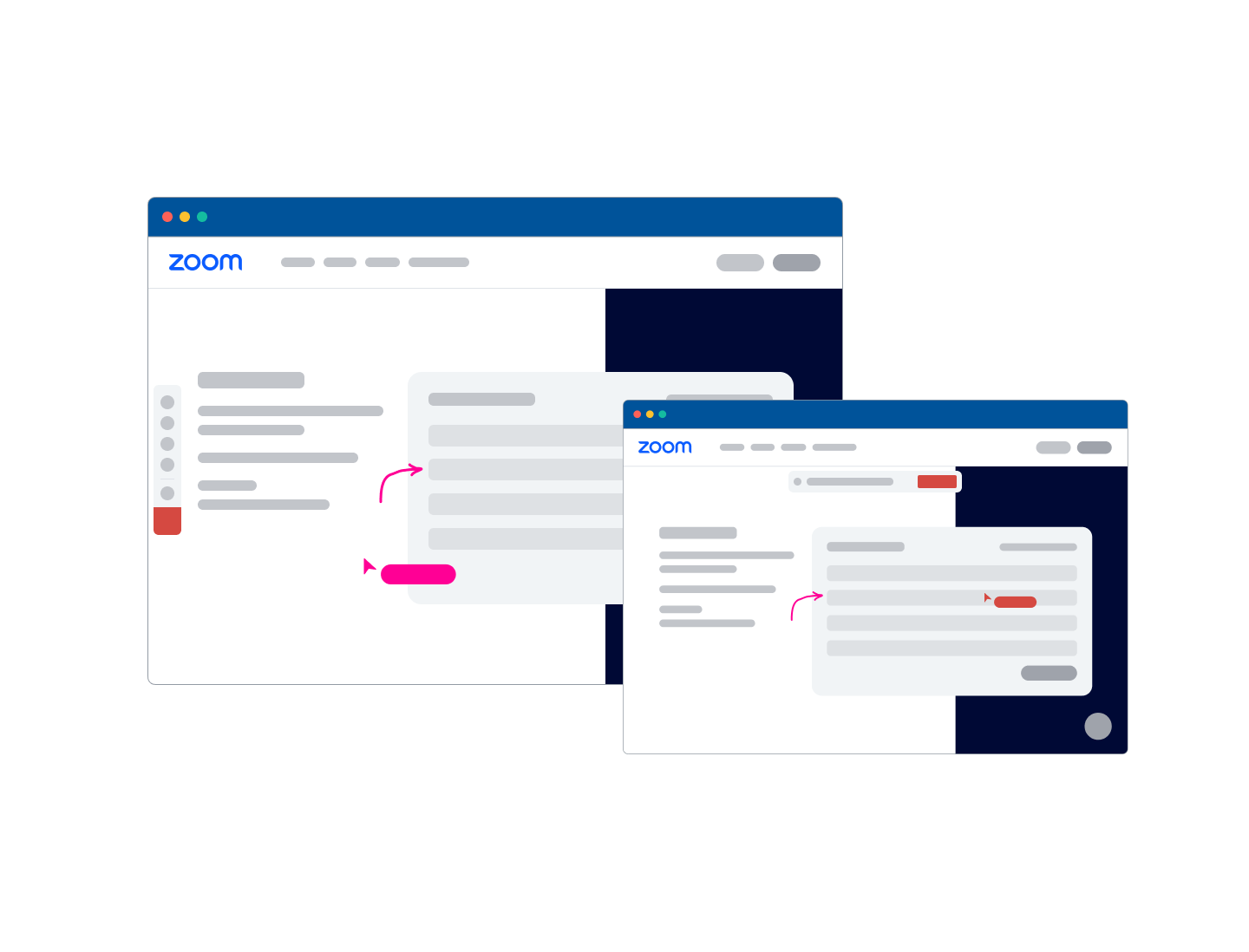
Add collaborative browsing to your web page with Zoom Cobrowse SDK
Zoom's Cobrowse SDK provides developers with all the tools required to easily integrate the cobrowsing experience into their web applications.
Updated on March 24, 2023
Published on August 11, 2021


For many organizations around the world, 2020 was the year that digital transformation accelerated faster than anyone could have expected. As a result, the demand for platforms as a service in industries such as telemedicine, telehealth, and education has increased dramatically.
Platform providers, including managed service providers, system integrators, independent software vendors (ISVs), and cloud solution providers have rapidly developed incredible platforms to help organizations with their digital transformation. In many cases, it has enabled businesses to continue operating by changing the way they deliver products and services, interact with customers, optimize processes, and keep their workforce safe.
In the educational sector, platforms like Zoom have enabled schools and universities to continue education virtually and allowed patients to continue to see healthcare specialists, even during lockdown.

The pandemic may have been a catalyst for the acceleration of digital transformation, but the demand for these platforms will continue to increase even when COVID-19 is under control. This is just the first generation for most of these platforms as many were created in a hurry to address the basic needs in a locked-down world.
The next generation of platforms will need to provide more interaction, collaboration, intelligence, and insights, as well as cater to hybrid scenarios that blend in-person operations with remote, refined services, and additional value-added services.
For some use cases, unified communications is a basic requirement. For example, virtual event platforms are providing organizations and industries the opportunity to continue hosting industry events, including large seminars, booth discussions, and one-to-one meetings. Digital workplace platforms have allowed organizations to keep working remotely with all the facilities and services employees would normally have access to in the office.
For others, unified communications is a value-added premium service. Many online learning platforms have created advanced integrations between Learning Management Systems (LMS) and Zoom's video-first platform, embedding video services into their LMS. Healthcare providers have taken similar steps for telehealth platforms, where Electronic Medical Record (EMR) systems have integrated Zoom’s video capability to provide complete end-to-end telehealth services for patients.

You can also embed the performance, scale, and reliability of Zoom within your application or platform to provide a seamless and engaging customer experience where your users can connect without ever leaving your platform.
Through Zoom’s ISV program, the Zoom Developer Platform offers platform integrators and application providers several solutions to easily integrate Zoom's video-first unified communications platform, including:
To discover more about Zoom’s integration capabilities, please visit our Partner Programs page, and select “Integrate”. You can also email isvsupport@zoom.us, and our ISV team will respond shortly.